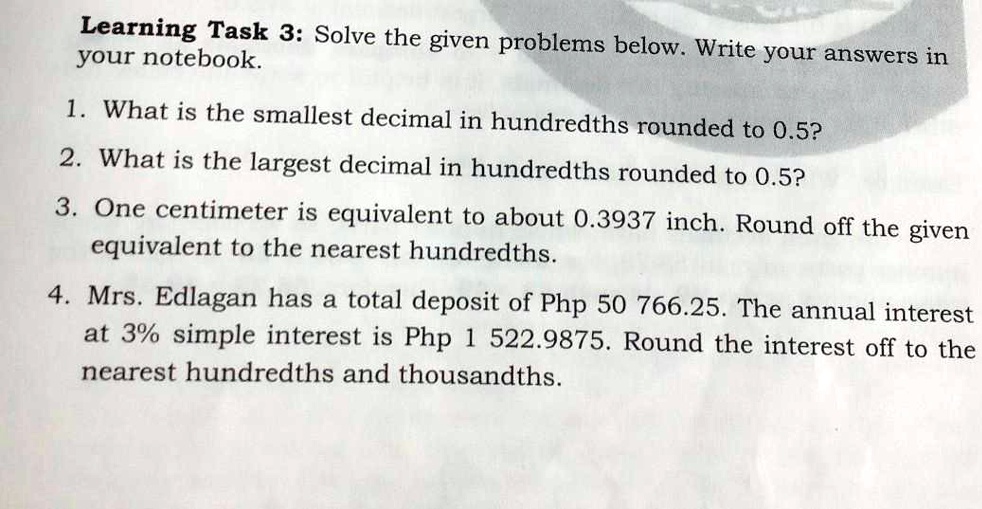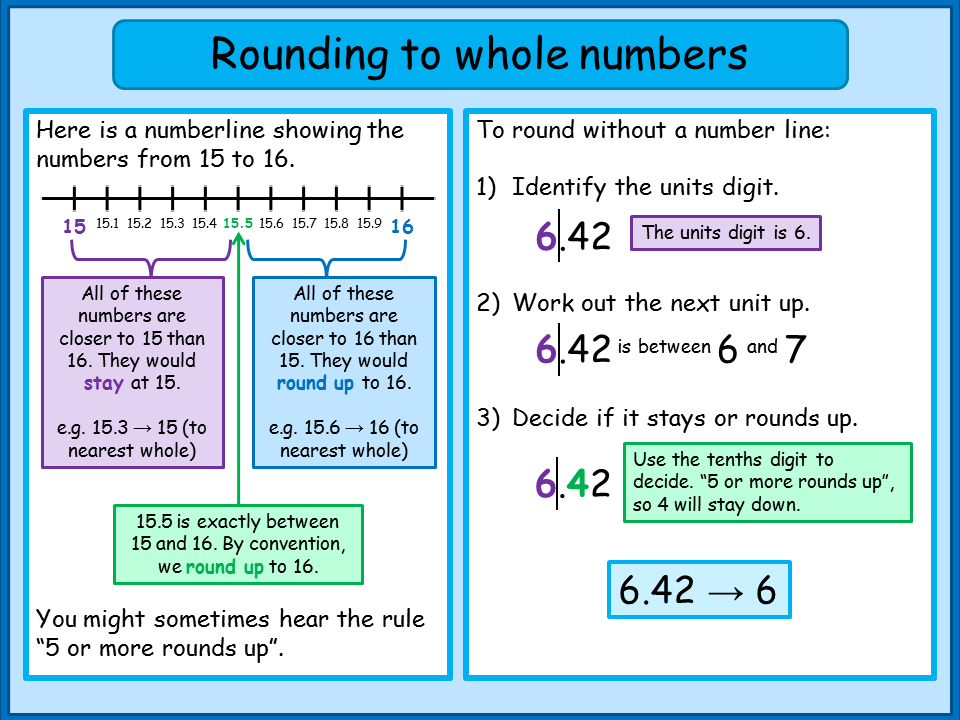Understanding how to round off numbers to the nearest hundredths is an essential skill in mathematics and everyday life. Whether you're working with decimals in school, handling financial transactions, or calculating precise measurements, rounding numbers is a fundamental concept that simplifies complex figures while maintaining accuracy. This article will guide you through everything you need to know about rounding to the nearest hundredths, ensuring you have a solid foundation in this important mathematical operation.
Rounding off to the nearest hundredths may seem simple at first glance, but mastering it requires a clear understanding of decimal place values and the rules governing the rounding process. By the end of this article, you will be equipped with the knowledge and confidence to handle various scenarios where rounding is necessary.
Whether you're a student looking to improve your math skills or a professional needing to apply rounding in your work, this comprehensive guide will cover everything from basic principles to advanced applications. Let's dive in and explore the world of rounding to the nearest hundredths!
What Does "Rounded Off to the Nearest Hundredths" Mean?
Rounding off to the nearest hundredths refers to the process of simplifying a number by keeping only two decimal places and adjusting the digits based on specific rules. The hundredths place is the second digit to the right of the decimal point. For instance, in the number 3.456, the digit '5' is in the hundredths place.
The primary purpose of rounding is to make numbers easier to work with while retaining their approximate value. This is especially useful in situations where exact precision is not necessary, such as in budgeting, scientific measurements, or statistical analysis.
Understanding Decimal Place Values
Identifying the Hundredths Place
Before we dive into the rounding process, it's crucial to understand decimal place values. Each digit in a decimal number has a specific place value:
- Ones place: The digit immediately to the left of the decimal point.
- Tenths place: The first digit to the right of the decimal point.
- Hundredths place: The second digit to the right of the decimal point.
- Thousandths place: The third digit to the right of the decimal point, and so on.
For example, in the number 7.891:
- 7 is in the ones place.
- 8 is in the tenths place.
- 9 is in the hundredths place.
- 1 is in the thousandths place.
The Rules of Rounding to the Nearest Hundredths
Step-by-Step Guide to Rounding
Rounding to the nearest hundredths follows a straightforward set of rules:
- Identify the digit in the hundredths place.
- Look at the digit immediately to the right of the hundredths place (the thousandths place).
- If the thousandths digit is 5 or greater, increase the hundredths digit by 1.
- If the thousandths digit is less than 5, leave the hundredths digit unchanged.
- Remove all digits to the right of the hundredths place.
For example, rounding 4.678 to the nearest hundredths:
- The hundredths digit is '7'.
- The thousandths digit is '8' (greater than 5).
- Increase the hundredths digit by 1, resulting in 4.68.
Practical Applications of Rounding to the Nearest Hundredths
Use in Financial Calculations
Financial calculations often involve rounding to the nearest hundredths, as monetary values are typically expressed to two decimal places. For example, when calculating sales tax or determining the final cost of a product, rounding ensures that the result is presented in a standard format.
Scientific and Engineering Measurements
In scientific and engineering fields, rounding to the nearest hundredths helps simplify complex data while preserving accuracy. For instance, when measuring distances, temperatures, or chemical concentrations, rounding can make the data more manageable without losing critical information.
Common Mistakes to Avoid
Incorrect Identification of Place Values
One of the most common mistakes when rounding is misidentifying the hundredths place. Always double-check the position of each digit to ensure accurate rounding.
Forgetting to Remove Extra Digits
After rounding, it's essential to remove all digits beyond the hundredths place. Leaving extra digits can lead to confusion and inaccuracies in calculations.
Advanced Techniques for Rounding
Rounding Large Numbers
Rounding large numbers to the nearest hundredths may seem challenging, but the process remains the same. Focus on the hundredths place and follow the standard rules. For example, rounding 1234.5678 to the nearest hundredths results in 1234.57.
Rounding Negative Numbers
Negative numbers are rounded in the same way as positive numbers. The key is to focus on the hundredths place and apply the rounding rules accordingly. For instance, rounding -3.456 to the nearest hundredths gives -3.46.
Real-World Examples of Rounding
Example 1: Budgeting
Imagine you're creating a monthly budget and need to round your expenses to the nearest hundredths. If your grocery bill is $234.567, rounding it results in $234.57, making it easier to track and manage your finances.
Example 2: Scientific Research
In a scientific study, researchers might measure the temperature of a substance as 78.912°C. Rounding this to the nearest hundredths gives 78.91°C, providing a clear and concise representation of the data.
Tools and Resources for Rounding
Online Rounding Calculators
For quick and accurate rounding, online calculators are an excellent resource. Websites like Mathway and CalculatorSoup offer tools specifically designed for rounding numbers to the nearest hundredths. These tools are especially helpful for verifying manual calculations or handling large datasets.
Spreadsheets and Software
Excel and other spreadsheet software provide built-in functions for rounding numbers. The ROUND function in Excel allows you to specify the number of decimal places, making it easy to round to the nearest hundredths.
Conclusion
Rounding off to the nearest hundredths is a valuable skill with numerous applications in mathematics, finance, science, and everyday life. By understanding decimal place values and following the rules of rounding, you can simplify complex numbers while maintaining accuracy. Whether you're a student, professional, or simply someone looking to improve your math skills, mastering this concept will serve you well in various situations.
We encourage you to practice rounding with different numbers and scenarios to reinforce your understanding. Share this article with others who might benefit from learning about rounding to the nearest hundredths. And don't forget to explore our other articles for more insightful content on mathematics and related topics!
Table of Contents
- What Does "Rounded Off to the Nearest Hundredths" Mean?
- Understanding Decimal Place Values
- The Rules of Rounding to the Nearest Hundredths
- Practical Applications of Rounding to the Nearest Hundredths
- Common Mistakes to Avoid
- Advanced Techniques for Rounding
- Real-World Examples of Rounding
- Tools and Resources for Rounding
- Conclusion


